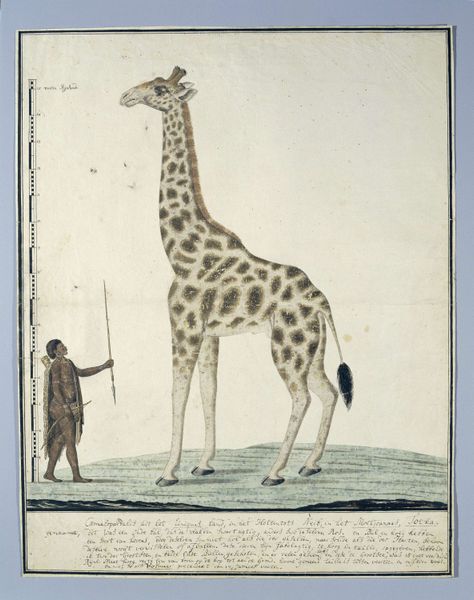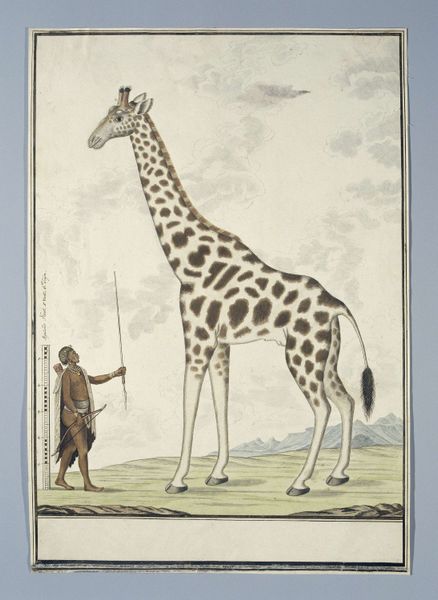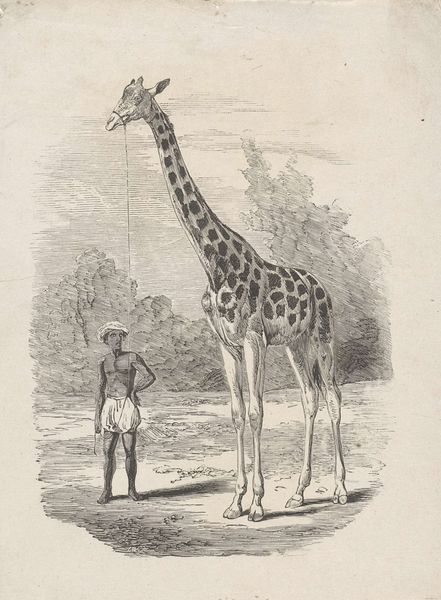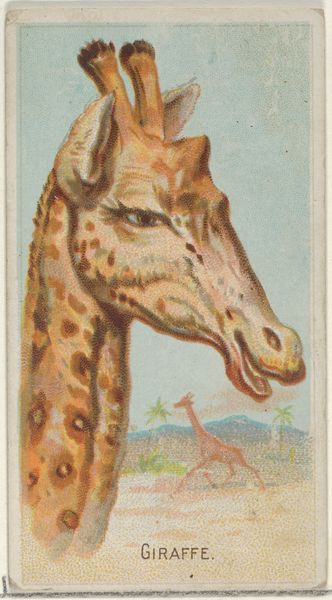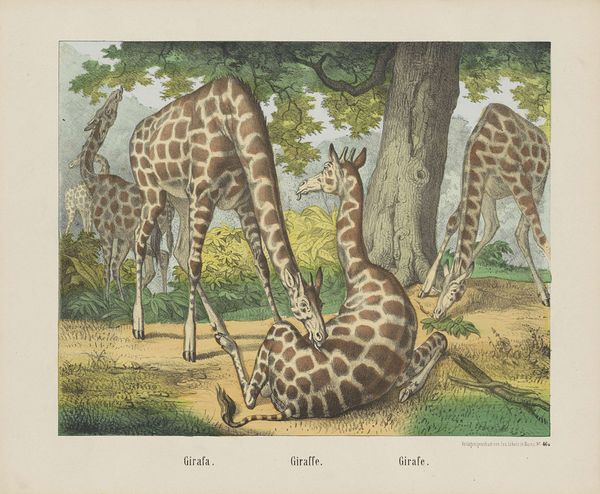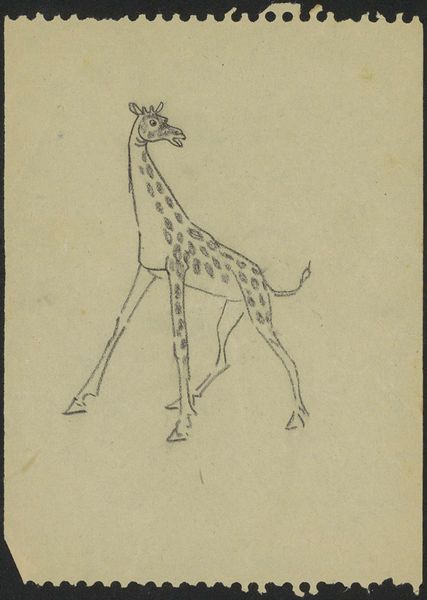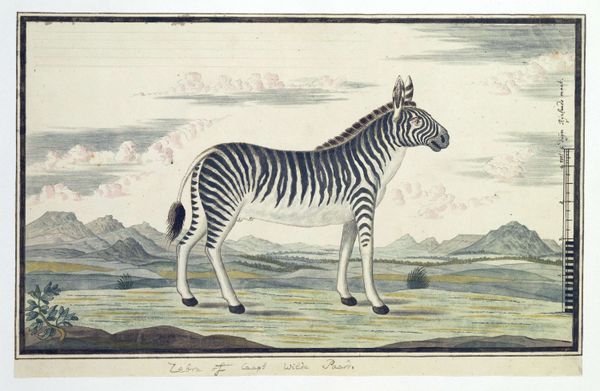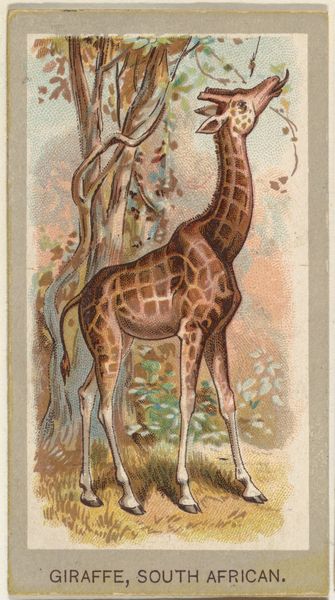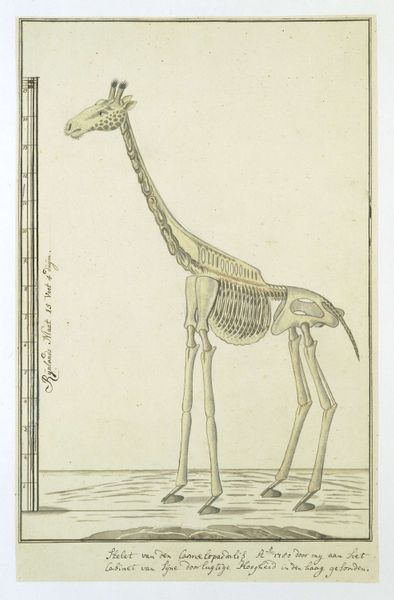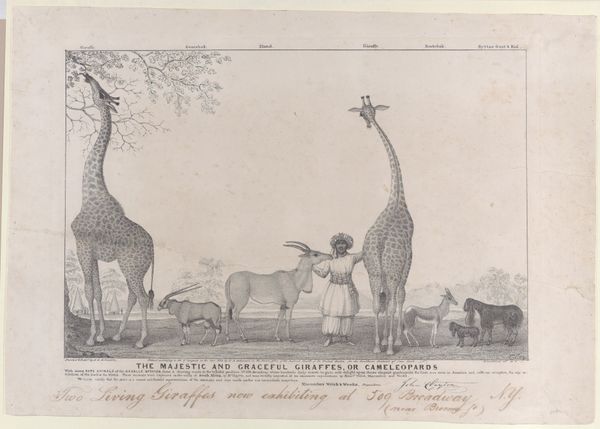
drawing, coloured-pencil, print, pencil
#
portrait
#
drawing
#
coloured-pencil
# print
#
caricature
#
landscape
#
caricature
#
coloured pencil
#
pencil
#
watercolour illustration
#
pencil art
#
realism
Dimensions: height 660 mm, width 480 mm, height 535 mm, width 413 mm, height 457 mm, width 411 mm
Copyright: Rijks Museum: Open Domain
Curator: The artwork before us is Robert Jacob Gordon's "Giraffa Camelopardalis," or Giraffe, a drawing rendered circa 1779 with coloured pencil. It’s interesting to consider Gordon's role as a military commander within the Dutch East India Company, juxtaposed with his scientific explorations, as depicted here. Editor: Immediately, the composition strikes me. The giraffe's verticality contrasts dramatically with the human figure, grounding it. Note the tonal shifts within the giraffe's coat; the artist's command of color and line work create a convincing illusion of form and depth. Curator: Precisely. What is compelling, structurally, is how Gordon positions the giraffe—a novel subject—in relation to an indigenous hunter, potentially Khoisan, inviting discussions about colonial encounters and the pursuit of knowledge during that era. The giraffe itself became a symbol of exotic allure. Editor: Symbolism aside, focus on the detail. Look closely at how the artist meticulously captured the textures, from the giraffe's spotted hide to the hunter's attire. Consider, too, the negative space and the almost flattened landscape. Curator: The flatness is very interesting, as the setting can hardly be recognized as a "landscape", the subject seems like an estranged species from a very different land and environment, it's all about the animal itself! Moreover, this reflects how the representation and understanding of foreign flora and fauna served political and economic agendas back home in Europe. The depiction, even if striving for scientific accuracy, subtly reinforced notions of the "other." Editor: I see your point about the historical context. I cannot help but get completely submerged on its formal aspects, how its almost naive handling of light and shadow renders an incredible three-dimensional image from just a set of lines and thoughtful stroke placement. Curator: I agree the art reveals layers of complexity, both formal and contextual, to allow insights into the scientific exploration that shaped 18th-century perceptions. Editor: Indeed. Analyzing the interplay of line, form, and the politics of representation, unveils a more profound message about the power dynamics embedded in this image.
Comments
No comments
Be the first to comment and join the conversation on the ultimate creative platform.
